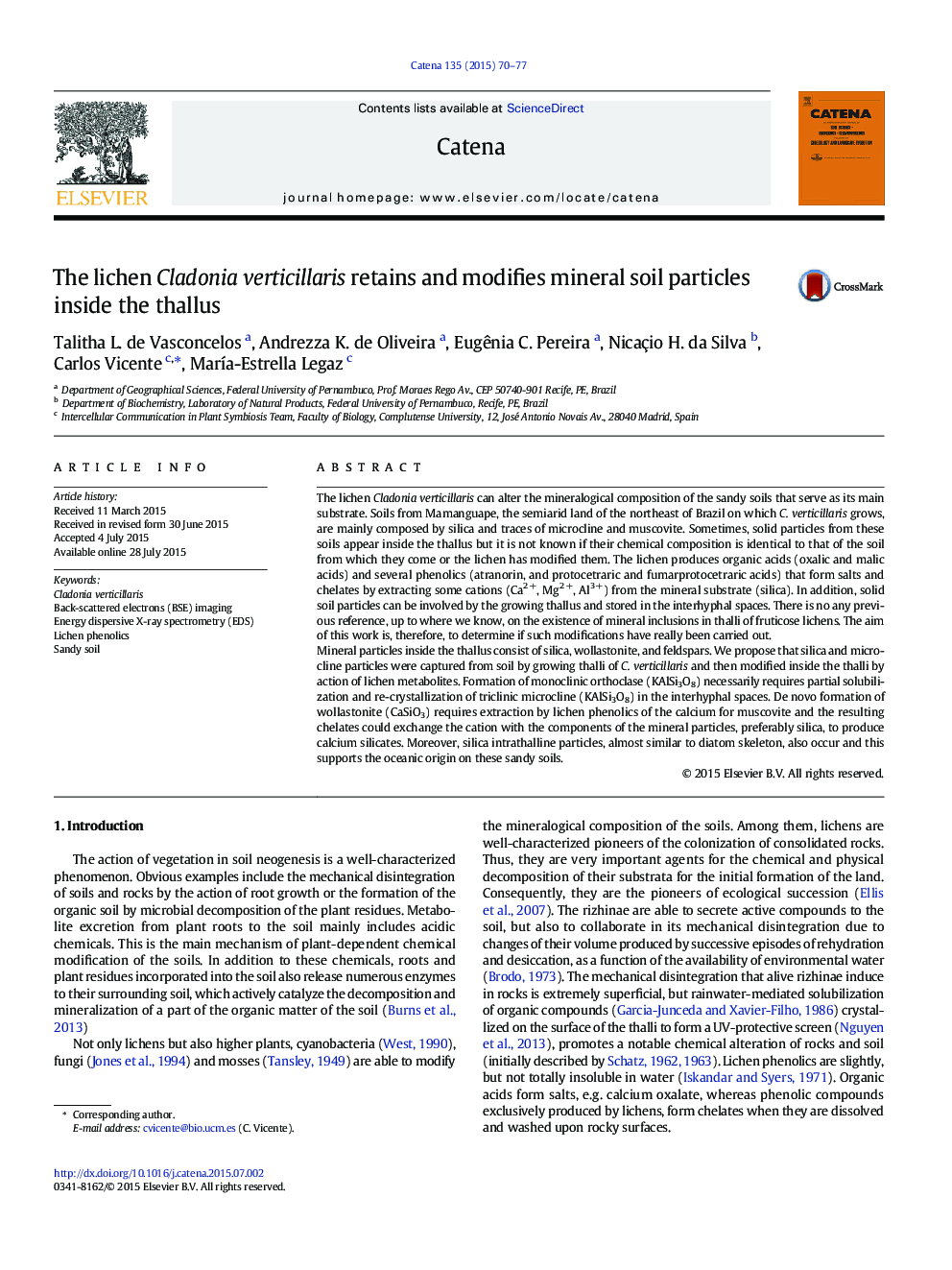| کد مقاله | کد نشریه | سال انتشار | مقاله انگلیسی | نسخه تمام متن |
|---|---|---|---|---|
| 4571079 | 1629217 | 2015 | 8 صفحه PDF | دانلود رایگان |

• Cladonia verticillaris is a lichen growing of sandy soils of Mamanguape (Brasil).
• These soils are mainly composed by silica and traces of microcline and muscovite.
• The lichen detaches particles of the soil and internalize there inside thalli.
• Modified particles in the thallus consist of silica, wollastonite, and feldspars.
• Modification of particles implies solubilization, recrystallization and chelation.
The lichen Cladonia verticillaris can alter the mineralogical composition of the sandy soils that serve as its main substrate. Soils from Mamanguape, the semiarid land of the northeast of Brazil on which C. verticillaris grows, are mainly composed by silica and traces of microcline and muscovite. Sometimes, solid particles from these soils appear inside the thallus but it is not known if their chemical composition is identical to that of the soil from which they come or the lichen has modified them. The lichen produces organic acids (oxalic and malic acids) and several phenolics (atranorin, and protocetraric and fumarprotocetraric acids) that form salts and chelates by extracting some cations (Ca2 +, Mg2 +, Al3 +) from the mineral substrate (silica). In addition, solid soil particles can be involved by the growing thallus and stored in the interhyphal spaces. There is no any previous reference, up to where we know, on the existence of mineral inclusions in thalli of fruticose lichens. The aim of this work is, therefore, to determine if such modifications have really been carried out.Mineral particles inside the thallus consist of silica, wollastonite, and feldspars. We propose that silica and microcline particles were captured from soil by growing thalli of C. verticillaris and then modified inside the thalli by action of lichen metabolites. Formation of monoclinic orthoclase (KAlSi3O8) necessarily requires partial solubilization and re-crystallization of triclinic microcline (KAlSi3O8) in the interhyphal spaces. De novo formation of wollastonite (CaSiO3) requires extraction by lichen phenolics of the calcium for muscovite and the resulting chelates could exchange the cation with the components of the mineral particles, preferably silica, to produce calcium silicates. Moreover, silica intrathalline particles, almost similar to diatom skeleton, also occur and this supports the oceanic origin on these sandy soils.
Journal: CATENA - Volume 135, December 2015, Pages 70–77